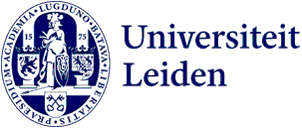
Towards a more diverse diversity policy: NWA subsidy for ‘Dilemmas of diversity’ project
The ‘Dilemmas of diversity’ research project is to receive a subsidy of 1.8 million euros from the National Research Agenda (NWA). Coordinator Marlou Schrover will be examining the diversity policy of Dutch cities in the present, past and future, together with 37 societal partners.

Over the past few months, Schrover, professor of Economic and Social History, has spent hours on the phone with potential partners for the project. ‘I’ve talked a lot with people to see what is actually going on,’ she explains. ‘Diversity isn’t just about gender or ethnicity; it’s also about sexuality and handicaps, and religion and education. We and our partners believe it’s really important to see how all these things connect with another.’
In practice, it is often difficult to do justice to all these different kinds of diversity. ‘As a policy maker you’re given a list of twelve or more factors to bear in mind, but a lot of policy makers have no money, no people and no time to give to this issue.’ That’s in part due to the fact that different groups often have very different interests, as Schrover explains: ‘If you’re going to lay out a park, for example, you find that young people want a skatepark, while older people want to keep the youngsters out of the park. It’s logical, then, that policy makers have to set priorities, even though they know they still need to keep all the balls in the air. As a result, diversity policy often ends up being about ethnicity.’
Doing justice to diversity
The key question in the NWA research is therefore how we can improve diversity in an urban setting, by which the researchers mean the central Randstad region as well as towns and cities outside this area. ‘In industrialised cities like Venlo, Tilburg and Almelo, a lot of work is done on diversity policies, but they have a very different setting and history from Amsterdam and Rotterdam, for example,’ Schrovers explains. ‘That’s why we’re very clear in saying that there’s more to the Netherlands than just the Randstad.’
Past, present and societal partners
To be able to map this whole region, the scientific team will use the knowledge of its societal partners, from the COC (the Dutch LGBTI organisation) and the Netherlands Institute for Social Research to different municipalities. ‘They have already produced a lot of material,’ Schrover says. ‘It’s just that nothing has been done with it.’ The research team is now going to use it in an analysis of the past seventy years of diversity policy that we have in the Netherlands. ‘People do say that the policy has failed, but nobody has ever really looked at what has actually been done.’ And you also have to remember that actions based on these policies can take a long time to work their way through to practice. You see that in how different neighbourhoods are organised. Once a decision has been taken on where a park or library is going to be located, there’s no going back.’
People do say that the policy has failed, but nobody has ever really looked at what has actually been done.
At the same time, the societal partners are sometimes asked to gather information that will form the basis for scientific partners, such as the Utrecht University of applied Sciences, the Leiden Academy of Vitality and Ageing and the Technical University Delft, to do their more practical work. ‘Delft has “games” that students can get involved in and see when women are too afraid to be out on the streets at night. A seat is fine, but not if there’s someone sitting there who is drunk. This lets them think about how you can achieve inclusiveness within the available financial framework.'
Interplay
The solutions that this way of working produces will be tested during the course of the research. ‘I’ve copied that from the Justice department,’ Schrover admits ‘As researchers, we’re invited to present our ideas during a project, so that the judiciary can immediately indicate whether there is social or political support for them. We’ve already planned meetings with our partners while the studies are ongoing, where we will try to get ideas from them and at the same time share with them our ideas about what they’re doing.’
